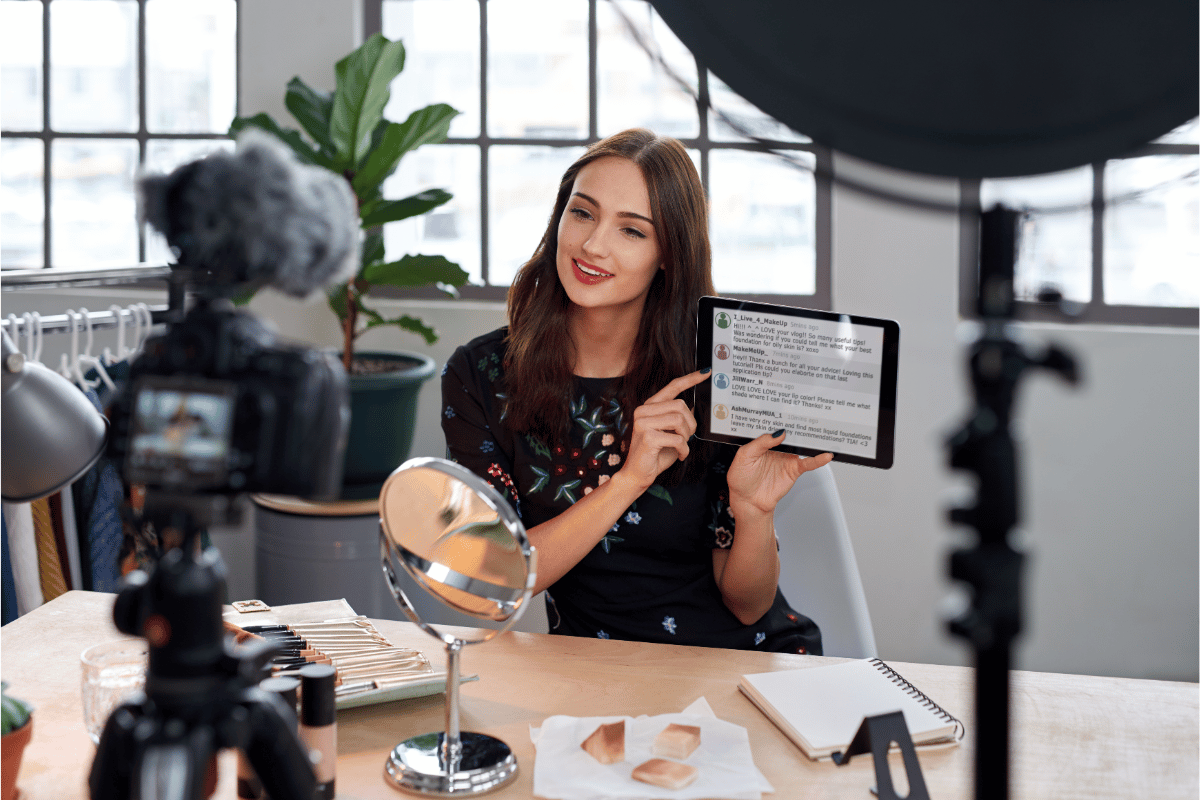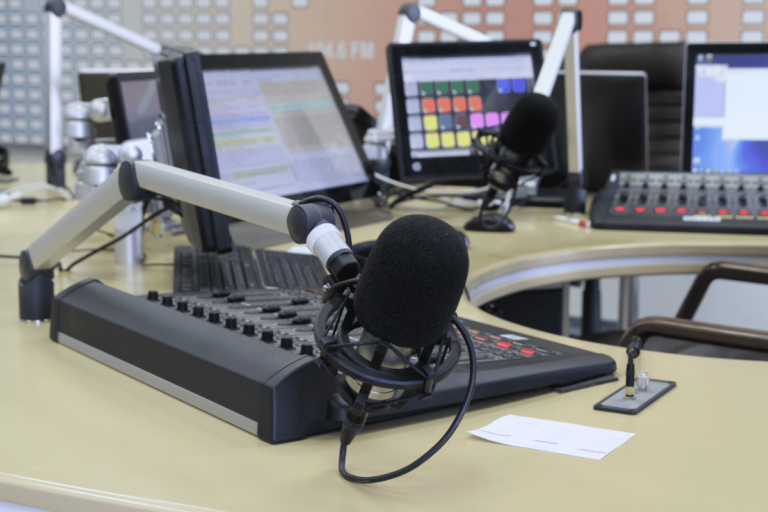Influencer Marketing ROI: Measuring success.
Did you know that influencer marketing can bring back $5.78 for every dollar spent? Yet, 30% of brands don’t track ROI. This shows how crucial it is to measure the success of influencer marketing campaigns. The industry is expected to hit $21.2 billion by the end of 2023.
It’s key to understand how to measure the impact of influencers. Brands use them to boost brand awareness, increase sales, and connect better with customers. Top brands see a big return, making $20 for every $1 spent on influencer marketing.
But, measuring ROI is complex due to various goals, like improving brand visibility. Despite 70% of brands tracking ROI, many face challenges. It’s vital to have solid strategies and metrics to make influencer marketing successful. This article will explain why ROI measurement is important, discuss key performance indicators (KPIs), and show how to calculate campaign costs.
Key Takeaways
- Influencer marketing is projected to reach $21.2 billion by 2023.
- On average, brands make $5.78 for every $1 spent on influencer marketing.
- 30% of brands are not tracking influencer marketing ROI at all.
- Utilizing effective metrics and KPIs is essential for measuring influencer impact.
- Strategic ROI measurement can identify top-performing influencers and optimize campaigns.
Introduction to Influencer Marketing ROI
For brands looking to maximize ROI through expert-led influencer campaigns, partnering with a top influencer marketing agency like The Influencer Marketing Factory can make a measurable difference in performance and efficiency.
The Growth of the Influencer Marketing Industry
The influencer marketing industry is expected to hit $21.2 billion by 2023. Brands are putting a lot of money into working with influencers. The best part is, the top 13% of brands see a return of up to $20 for every $1 they spend.
Brands use influencers to achieve both short-term and long-term goals. They track sales through unique links and promo codes. When they combine influencer content with ads, they can see a big increase in purchases, up to 82%.
Why Influencer Marketing Works
Influencer marketing connects brands directly with their target audience. Brands with special offers and a strong social media presence see great success. They use tools that give detailed analytics to track sales from influencers.
This type of marketing is very flexible, fitting different marketing goals. Brand awareness campaigns help new brands enter the market and make high-consideration purchases. They look at metrics like impressions and reach for insights.
On the other hand, engagement campaigns get people to like, share, and comment on posts. These actions show long-term customer loyalty.
Adding influencer collaboration to a marketing strategy brings big short-term gains. It also builds long-term brand loyalty and visibility.
Why Measuring Influencer Marketing ROI is Essential
Understanding the influencer marketing impact is key to campaign success. Sadly, 33% of brands don’t measure their ROI from influencer activities. Only half of those who do know how to calculate it right. Measuring ROI brings many benefits, making it vital for every strategy.
Securing Buy-In from Senior Management
Marketing teams often struggle to show the value of influencer campaigns to senior management. With up to $18 in Earned Media Value (EMV) for every dollar spent, it’s important to highlight this big return. Showing accurate influencer performance metrics helps make a strong case, including direct sales and cost benefits. This can change hesitant executives into supporters of influencer marketing.
Optimizing Marketing Strategies
Analyzing influencer campaigns helps brands see what works and what doesn’t. Tracking metrics like page views, impressions, and engagement rates gives insights. This data helps in smarter resource allocation and improving future campaigns for better returns.
Rewarding Top-Performing Influencers
It’s crucial to identify and reward top influencers for long-term partnerships. By looking at campaign metrics, brands can spot those who drive sales and those who boost brand awareness and engagement. Rewarding these influencers, whether they’re Nano-, Micro-, Macro-, or Mega-Influencers, strengthens valuable relationships that add lasting value to marketing.
Measuring influencer marketing ROI is crucial for brands wanting to get the most from their marketing. Precise calculations guide strategy and reward performance, showing the importance of thorough measurement.
Setting Campaign Goals for Influencer Marketing
It’s vital to set clear, measurable goals for a successful influencer marketing strategy. Having specific goals helps in making influencer partnerships work better and reaching marketing targets.
SMART Goals Framework
The SMART framework makes sure goals are Specific, Measurable, Achievable, Relevant, and Time-bound. For example, goals might be to grow social media followers, get more clicks to a website, boost sales of a new product, or get a certain amount of user content.
Aligning Goals with Marketing Objectives
It’s important to link influencer marketing goals with wider marketing aims for a unified strategy. Goals can include raising brand awareness, increasing engagement, boosting sales, and building trust. In fact, 80% of marketers say influencer marketing works well, while only 58% feel traditional ads do.
Defining Your KPIs
Choosing the right Key Performance Indicators (KPIs) is crucial to track and measure influencer campaign success. KPIs might include reach, engagement, click-through rate, conversion rate, cost per acquisition, and return on investment. Checking these metrics often helps keep campaigns on track and ensures they succeed in the long run.
Key Metrics to Track Influencer Performance
To measure how well influencers do, we look at several key metrics. These give us insights into how well our campaigns work. It’s important to keep an eye on these metrics. They help us understand the impact and get a better influencer engagement rate, boost sales ROI, and increase brand visibility metrics.
Sales Metrics
Sales metrics are key to seeing how influencer campaigns affect sales. They include:
- Direct sales from unique links, affiliate codes, or platform insights.
- Google Analytics to track web traffic and behavior.
- Looking at link traffic from social media and website traffic increases during and after campaigns.
For example, Flannels’ #PartyNeverStops campaign on TikTok made £3.68M in sales. It had an 18x return on ad spend and reached 91M views.
Brand Awareness Metrics
Brand awareness shows how successful influencer campaigns are. Important metrics here are:
- Impressions and reach, showing how many people see your content.
- Branded search volume and social media mentions.
- Growth in followers or subscribers.
About 41% of marketers check influencer performance by looking at follower growth. Around 40% watch for brand mentions and hashtags.
Engagement Metrics
Engagement metrics show how well influencers connect with their audience. They cover:
- Likes, comments, saves, and shares on posts.
- User-generated content and other community interactions.
- Analysis of engagement rates on platforms like TikTok and Instagram.
Influencer engagement rates can show future sales and customer loyalty. Many marketers watch these interactions to improve their strategies.
Calculating Influencer Marketing Campaign Costs
It’s key to understand the costs of influencer marketing for a successful budget. These costs play a big role in the campaign’s ROI.
Influencer Fees
Influencer fees are a big part of the costs. They depend on how many followers the influencer has and their niche. On average, they charge about $100 for every 10,000 followers.
This cost is important to include in the budget. It helps balance the cost with the impact of the campaign.
Production Costs
Production costs cover making high-quality content. This includes things like photography, videography, editing, and more. Brands should think about these costs when planning their campaigns.
The quality of content affects how engaged the audience is and how well the campaign works.
Professional Services Costs
Professional services costs are for hiring experts or agencies to run influencer campaigns. This includes strategy, finding influencers, monitoring the campaign, and analyzing results after. Spending part of the budget on these services can make the campaign more successful.
Thinking about all these costs helps brands manage their budget well. This leads to a more effective and efficient influencer marketing strategy, improving the ROI.
Methods to Measure Influencer Marketing ROI
There are many ways to measure the ROI of influencer marketing campaigns. It’s key to know these methods to see how well your strategies work and use your budget wisely.
Earned Media Value (EMV)
Earned Media Value (EMV) looks at the value from the content and exposure influencers create. It puts a dollar value on likes, shares, comments, and more. This shows how much your message spreads through influencers.
If an influencer’s post gets a lot of engagement, you can compare its value to traditional ads. This helps you see how effective it is.
Direct Sales Attribution
Direct sales attribution tracks sales from influencers using special links and promos. Brands use unique promo codes or URLs to see which sales come from each influencer. This method clearly shows how much money influencers make for you.
Brands like Nike and Sephora use this to see the direct effect of their influencer partnerships.
Consumer Engagement
Consumer engagement looks at likes, comments, and shares to see how influencers affect people. High engagement means people are really interested and loyal to the brand. These metrics show how likely people are to keep buying from you.
Tools like Instagram Insights and Facebook Analytics give you the data you need for this.
In conclusion, using a mix of methods like earned media value, direct sales tracking, and consumer engagement analysis gives a full picture of your influencer marketing ROI. This way, your marketing plans are based on solid data and make a real impact.
Case Studies: Successful Influencer Marketing Campaigns
Looking at specific case studies helps us see how influencer marketing can lead to big wins. These examples show how different strategies can boost brand awareness, increase sales, and make customers more loyal. Here are three influencer marketing success stories that stand out:
Case Study 1: Brand Awareness Success
Scotch & Soda ran a great influencer campaign to reach young people. They used Instagram and YouTube to grow their followers and get more engagement. This strategy helped them meet their marketing goals by making their brand more visible and connecting better with their audience.
Case Study 2: Revenue Generation
LOOKFANTASTIC used micro-influencers and content from users to boost sales and their Instagram ROI. They showed that even small influencers can make a big difference, helping to increase revenue and grow their fan base. Kettle + Fire also saw a $4 return for every $1 spent on Facebook Ads with their influencer campaign.
Case Study 3: Enhanced Customer Loyalty
ABN AMRO teamed up with big influencers for Small Business Saturday to get more people to use their cards at local shops. This campaign showed how influencers can create strong, lasting bonds with their audience. Iceland Foods also saw a big jump in approval ratings, from 10% to 70%, thanks to their smart use of influencer marketing.
These case studies show why a well-thought-out influencer marketing strategy is key. By focusing on goals like brand awareness, making more money, and keeping customers loyal, brands can see amazing results from influencer marketing.
Best Practices for Enhancing Influencer Marketing ROI
To boost your influencer marketing ROI, focus on strategies that match your brand and goals. Here are some key tips to keep in mind.
Choosing the Right Influencers
Choosing the right influencers is key to maximizing influencer ROI. Pick influencers whose followers and values match your brand. This boosts engagement and trust.
Studies show a big jump in engagement when the brand and influencer share similar values. Also, trust and credibility go up, leading to a higher ROI. This shows why picking the right influencers matters a lot.
Leveraging User-Generated Content
Using user-generated content makes your influencer marketing more real and relatable. When influencers share they’re working with brands, people trust them more. This honesty builds trust and makes the brand look better, raising ROI.
Using content from your audience creates a true bond with them. This builds trust and loyalty that lasts over time.
Continuous Campaign Optimization
Always look for ways to make your campaigns better. Use data to guide your decisions and adjust your plans as needed. This approach leads to better campaign results.
By using data, you can focus on what works best and try new things. This helps you get the most out of your influencer marketing.
Looking at how you spend your money can help you use it better. You can put more into what works and try out new influencers. This is a smart way to improve your maximizing influencer ROI.
Conclusion
In today’s marketing world, analyzing influencer marketing is key. The industry is worth $17.4 billion and needs both qualitative and quantitative methods to measure success. Setting SMART goals and using ROI techniques is crucial for a good marketing plan.
Instagram is a big player with 3.8 billion sponsored posts a year. Nano-influencers are now a budget-friendly choice, bringing in more return on spend than big influencers. But, big influencers make more money but cost more, showing the importance of knowing which influencers to use.
Over 80% of U.S. companies use influencers for marketing, showing its popularity. The industry keeps growing, making it important to set clear goals and use both organic and paid methods. A complete approach, linking engagement to revenue, makes influencer marketing work well. As the industry grows, brands should aim to boost ROI by building long-term partnerships and blending influencer strategies with their marketing.
Source Links
- Influencer Marketing ROI: How to measure your campaigns
- How do you measure ROI of your influencer marketing campaigns?
- A Complete Guide to measure and maximise Influencer Marketing Campaign ROI
- The Smart Way to Measure Influencer Marketing ROI | Aspire
- Influencer Marketing ROI (Return on Investment) | The Complete Guide
- The Complete Guide to Influencer Marketing ROI
- Influencer Marketing ROI: Metrics and Strategies for Success
- Influencer marketing ROI: How to measure & get the most out of your influencer efforts – Influencity Blog
- Measuring the ROI of Influencer Marketing Campaigns
- How To Set And Achieve Your Influencer Marketing Goals | Aspire
- 10 metrics to track influencer marketing success in 2024
- A Complete Guide to Influencer Marketing Measurement
- 5 Steps To Calculate Your True Influencer Marketing ROI | Trend
- How to Calculate Influencer Marketing ROI and Measure Results
- Influencer Marketing ROI Calculator
- A 6-point framework for maximizing influencer marketing ROI
- Case Study: Successful Influencer Marketing ROI Strategies – The Cirqle
- 8 Insane (But True) Influencer Marketing Case Studies | Trend
- 12 Real-World Influencer Marketing Case Studies for DTC Brands
- A Guide to Improving Influencer Marketing ROI with Spend Efficiency Metrics and Techniques I Traackr
- 8 Influencer Marketing Best Practices to Get a Higher ROI
- Why Smaller Influencers Offer Better Marketing ROI [Research Insights]
- How to Boost Your Marketing ROI with the Help of Influencer Marketing • The Shelf Full-Service Influencer Marketing






